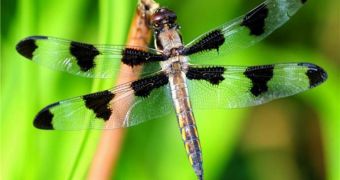Biodiversity is the major thing that makes our planet stand out from all others that we know. Various moons and exoplanets may have atmospheres, lakes, and even oceans, but they have no forms of life living on them. Earth does, and the level of diversity life registers here defies all imagination. In spite of all this, our species seems bent on destroying it. Species loss is occurring at an alarming rate, mostly due to the effects of climate change and global warming. Hunting and habitat loss are also among the primary reasons why many species go extinct, ScienceDaily reports.
It could be argued that Earth's biodiversity is its defining aspect. In order to celebrate this, and also the fact that 2010 has been named the International Year of Biodiversity (IYB), scientists are now releasing a special issue of a catalog detailing more than 1.25 million species. There is no way of knowing for sure how many species of animals occupy our planet. New discoveries are being made each year, and experts say that only a small portion of the creatures living in oceans and caves have been identified.
According to estimates, the number of distinct animals could be anywhere between 2 million and 100 million. Thus far, scientists estimate that as many as 1.9 million separate species have been identified and cataloged. Experts handling the new issue say that the Catalog of Life Special 2010 Edition will feature 1,257,735 species of plants, animals, fungi and microorganisms, for a grand total of 2,369,683 names. The information that was used for this massive body of work was collected from no less than 77 databases, which means that the catalog is the most complete in existence today. The DVD associated with the special issue will be launched on Wednesday, May 19, at the UN Convention on Biological Diversity (CBD), held in Nairobi, Kenya.
“"The Catalog of Life program is vital to building the world's biodiversity knowledge systems of the future and the Special 2010 Edition is a celebration of the diversity of life on Earth. Expert validation of recorded species will not only boost our understanding of the living world today but also allow governments, agencies and businesses to improve their future modeling to benefit our natural resources, and to document biotic resources world-wide. Through the Convention, 193 countries attempt to manage the conservation of biological diversity, the sustainable use of its components, and the fair and equitable sharing of the benefits from the use of genetic resources. This work is facilitated by a taxonomic framework cataloging all known species,” says University of Reading School of Biological Sciences professor Frank Bisby.

 14 DAY TRIAL //
14 DAY TRIAL //